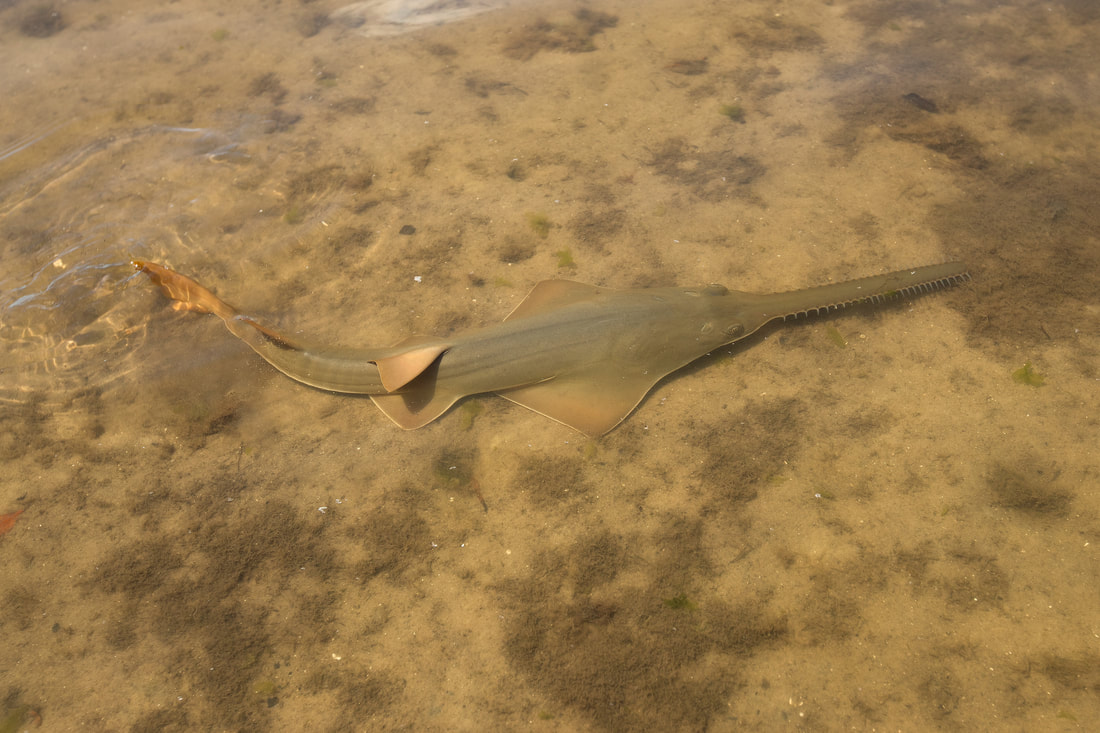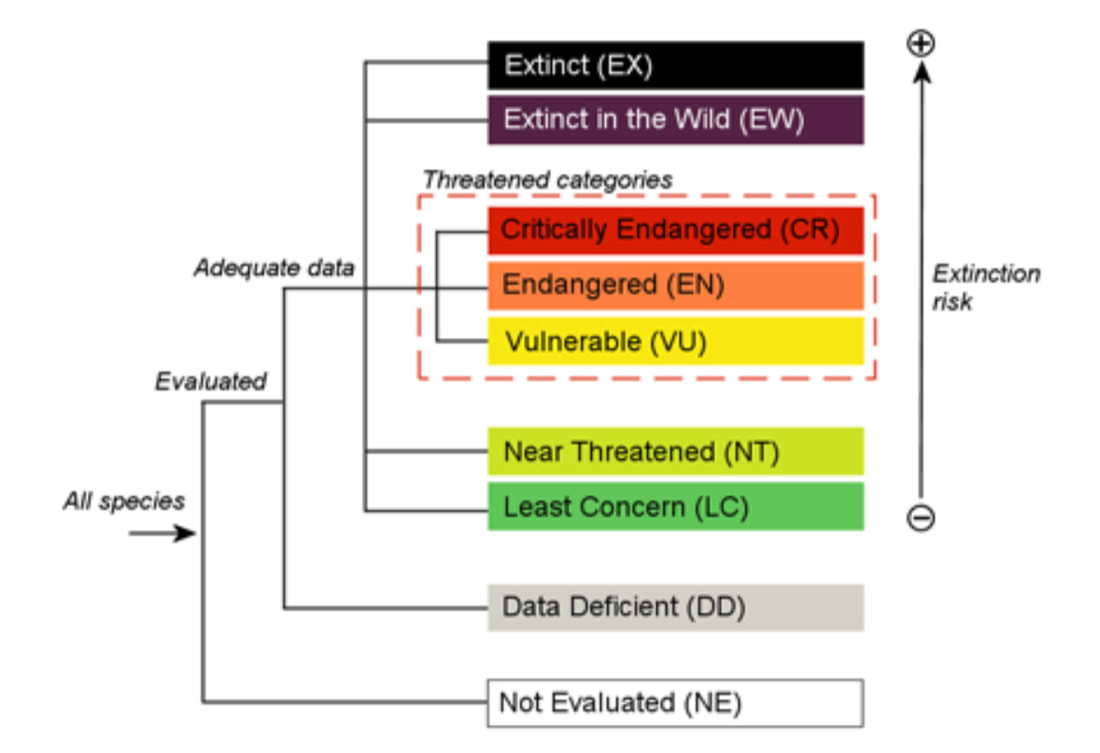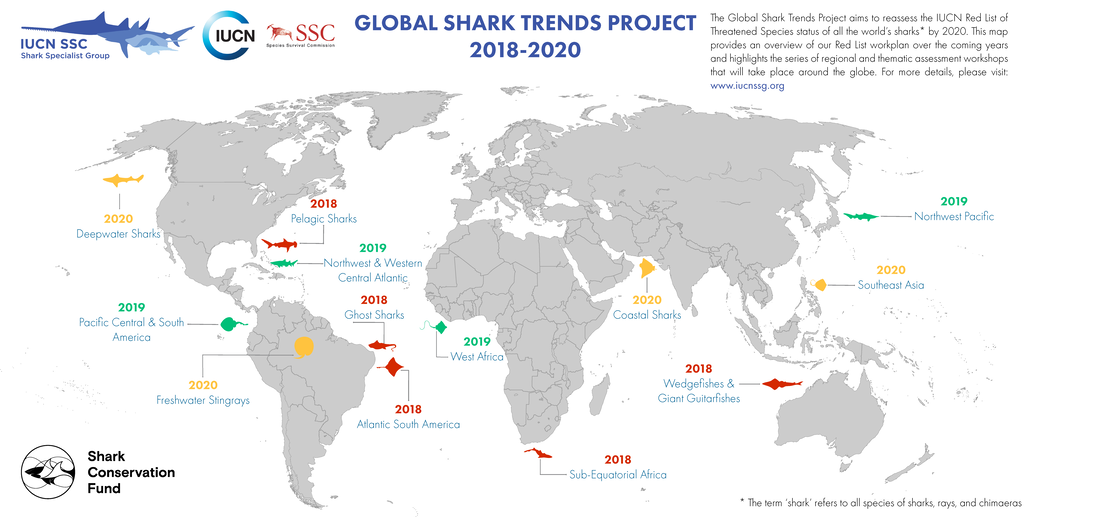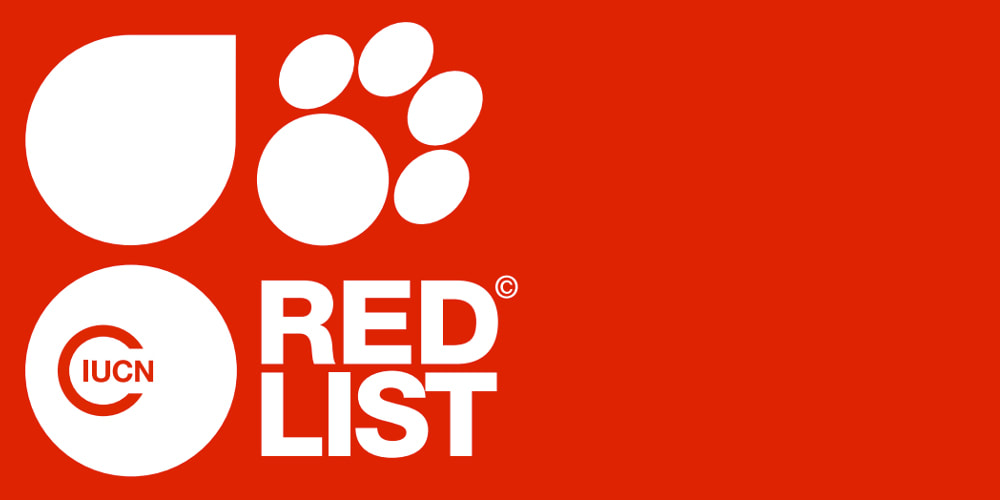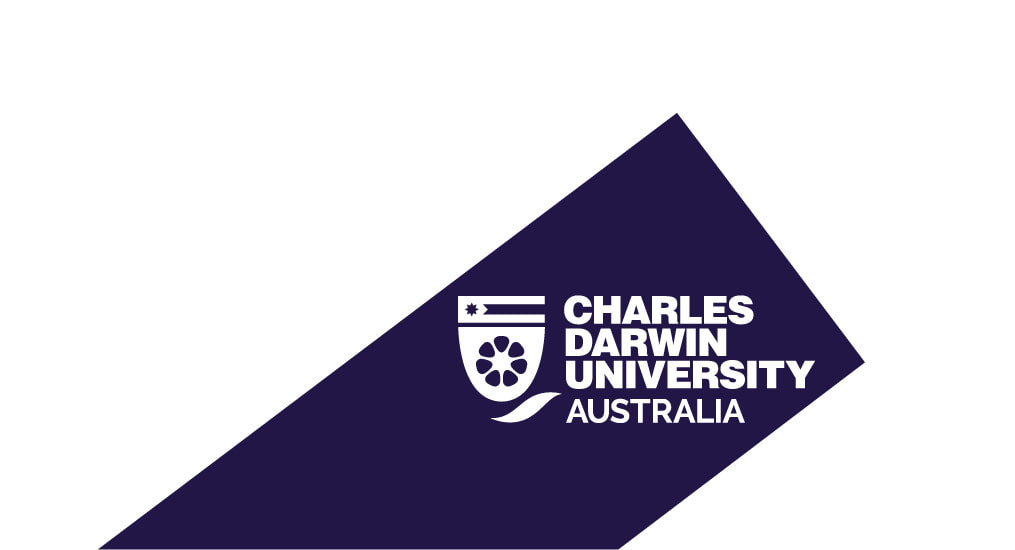|
Peter M. Kyne | SSG Red List Authority Coordinator
Because assessments have a lifespan of 10 years, the SSG has began the task of reassessing extinction risk for all ~1,250 known species (or assessing them for the first time for newly described species). Recent regional assessment approaches have assessed the fauna of the Northeast Pacific, the Northeast Atlantic and Mediterranean, Australia, the Arabian Sea and Adjacent Waters Region, and New Zealand and Oceania. The Global Shark Trends Project will be working its way around the globe through a series of regional and thematic assessment projects (see map below):
While some recent projects such as the Arabian Sea and Adjacent Waters Region, and New Zealand, undertook regional level assessments, the focus on the Global Shark Trends Project is exactly as it appears in the title: “Global”. That is, Red List assessments are undertaken at the global level, evaluating extinction risk across the entire distribution of a species’ range. Regional assessment projects will evaluate endemic species, while thematic assessment projects will evaluate wider-ranging species. As an example, although both the Daggernose Shark (Isogomphodon oxyrhynchus) and the Blue Shark (Prionace glauca) occur off Brazil, the former is being assessed under the Atlantic South America assessment project as it is endemic to that region, and the latter is being assessed under the wide-ranging pelagic assessment project as it occurs not only off Brazil, but circumglobally in the Indian, Pacific, and Atlantic Oceans. Each assessment project consists of the following steps:
The Global Shark Trends Project team will work with the relevant Regional Vice Chairs and members to prepare draft assessments with input from species and fisheries experts either during the workshops themselves, or outside of a workshop setting. As outlined in step 5 above, the project team will provide the SSG network with draft assessment categories for their consideration, as part of the consultation process. The assessment approach aims to marry the Red List training and experience of the Global Shark Trends Project team with the species and fisheries knowledge of the member network. Member’s contributions will be credited in assessments as relevant, and additional opportunities for publications are arising from many of our Red Listing activities. The task ahead is not trivial, but we have already been humbled by the remarkable contribution of the membership and other experts thus far. If you have any queries regarding the project’s Red Listing activities, or wish to know more about how you can get involved, please contact me at [email protected] Comments are closed.
|
Archives
May 2024
Categories
All
|

